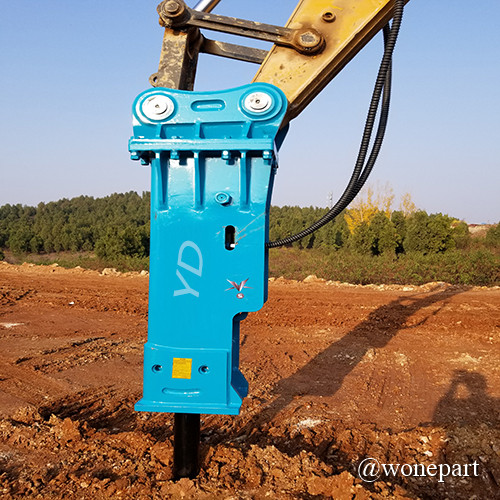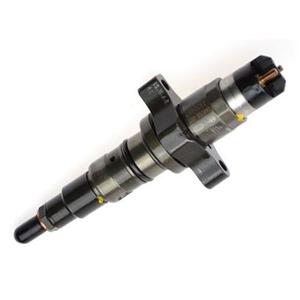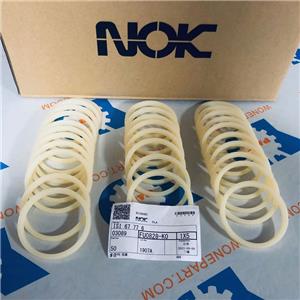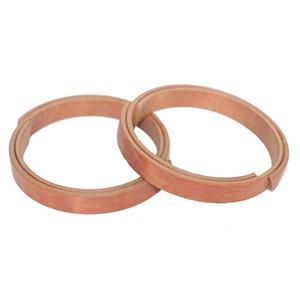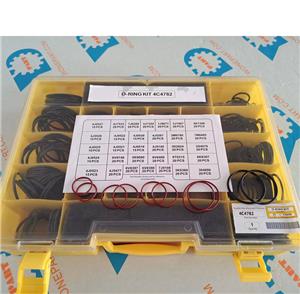How to Choose and Use Hydraulic Breaker to Fit your Excavators?
How to Choose and Use Hydraulic Breaker to Fit your Excavators?
Hydraulic Hammer
The power source of the hydraulic breaker is the pressure oil provided by the excavator or the pumping station of the loader. It can more effectively clean the mud in the floating stones and rock gaps in the function of excavating the foundation of the building. The principle of selecting a hydraulic breaker is to select the most suitable hydraulic breaker according to the model of the excavator and the environment of the operation.
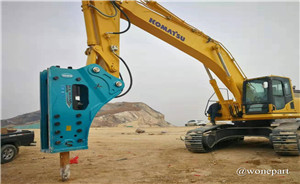
Principle
Hydraulic breakers have become an important tool for hydraulic excavators. Some people have installed hydraulic breakers on backhoe loaders (also known as two-headed) or wheel loaders for crushing operations. Hydraulic breakers, also known as hydraulic breakers or hydraulic breakers.
Japan, South Korea use this term more. There is also a hydraulic hammer, which is used by companies in Finland and Germany. China's manufacturers and users, there are called hydraulic crushers, also known as hydraulic picks, hydraulic guns, guns, broken heads, woodpeckers, etc., the terminology of China's national standard is called hydraulic impact breaker (hydraulic impact Breaker). Although the name is varied, it refers to the same machine. This machine is driven by hydrostatic pressure to drive the piston to reciprocate. When the piston strokes, it hits the drill rod at high speed, and the drill rod breaks solids such as ore and concrete. The machine is flooding the Chinese market. During the “Eleventh Five-Year Plan” period, with the good opportunity of the rapid development of China's hydraulic breaker market, the domestic hydraulic breaker enterprises have risen rapidly, and the domestic brand market share has been continuously improved. However, as China's hydraulic breaker market is still in a rapid growth period, there are many brands, and the assembled products and counterfeit and shoddy products are flooding the market. The only domestic brands with influence are only “YUDI”, “YD” and “wonepart”. A few of the "shocking" and so on.
Classification
There are many types of hydraulic breakers and there are many classification methods.
According to the operation mode: hydraulic breakers are divided into two types: hand-held and airborne. According to the working principle classification: hydraulic breakers are divided into three types: full hydraulic type, liquid gas combined type and nitrogen explosion type. The liquid-gas combination relies on hydraulic oil and rear-compressed nitrogen to expand, and at the same time push the piston to work. Most of the crushers belong to this kind of product; according to the classification of the valve structure: the hydraulic breaker is divided into two types: built-in valve and external valve.
In addition, there are other various classification methods, such as the feedback feedback type and the pressure feedback type breaker according to the feedback method;
· According to the noise size, it is divided into low noise type and standard type breaker;
· According to the shell form can be divided into triangle and tower breaker;
· According to the structure of the outer casing, it can be divided into a plywood type and a box type crusher.

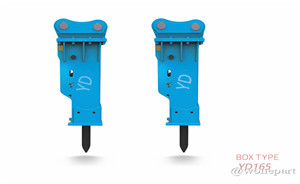
Instructions
Taking the YD breaker as an example, the correct use of the hydraulic breaker is explained.
1) Read the operating manual of the hydraulic breaker carefully to prevent damage to the hydraulic breakers and excavators and to operate them effectively.
2) Check the bolts and connectors for looseness before operation and whether the hydraulic lines are leaking.
3) Do not use a hydraulic breaker to burrow holes on hard rock.
4) Do not operate the breaker under full or full contraction of the piston rod of the hydraulic cylinder.
5) When the hydraulic hose is subjected to severe vibration, stop the operation of the breaker and check the pressure of the accumulator.
6) Prevent interference between the boom of the excavator and the drill bit of the breaker.
7) Do not immerse the breaker in water except for the drill.
8) Do not use the breaker as a lifting device.
9) Do not operate the breaker on the crawler side of the excavator.
10) When the hydraulic breaker is installed and connected with the hydraulic excavator or other engineering construction machinery, the working pressure and flow rate of the main hydraulic system must meet the technical parameters of the hydraulic breaker, the “P” port of the hydraulic breaker and the high-pressure oil passage of the main engine. Connection, "A" port is connected with the main engine return line.
The correct way of working
1) Appropriate breakdown force
In order to effectively break, the breaker applies a suitable breakdown force. If the breakdown force is insufficient, the hammering energy of the piston will not be effective to crush the stone; thus the reaction force of the hammering force will be transmitted to the hammer body, the boom of the excavator/loader, etc., thereby damaging these components.
On the other hand, if the excavator/loader boom is lifted, if the breakdown force is too large and the crushing operation is performed, the machine may suddenly tilt at the moment of crushing, the breaker is fierce, and the hammer will violently hit the stone and cause crushing. The hammer is damaged, and the striking operation is carried out under this condition, and the vibration is transmitted to the track of the excavator, and the wheel should be prevented from working under such conditions.
Therefore, during the combat operation, always pay attention to the breakdown force of the breaker, and do not work when the breakdown force is not appropriate.
2) Breakdown direction
The direction of breakdown should be in line with the steel. When the steel is crushed by the rock, the amount should be kept in the vertical direction. If the hammer direction is inclined, the steel brazing may slip off during the hammering operation, causing the steel brazing and the piston to break or become stuck. Therefore, when the crushing operation is carried out, the breakdown point should be selected, so that the hammering operation can ensure the hammering stability.
Operational precautions
Operators should pay attention to the following points during the work of the breaker:
1) Stop the operation when the hose is vibrating
The breaker high pressure and low pressure hose should be checked for excessive vibration. If that is the case, it may be a malfunction and you should immediately contact your local authorized service office for repair service. Further check the hose joint for oil leakage. If there is oil leakage, retighten the joint. As shown in the figure, during the operation, visually check whether there is any margin in the steel. If the remaining amount is definitely stuck in the lower body, the lower body should be removed to see if the part should be repaired or replaced.
2) Stop the job (avoid excessive air strikes)
Once the stone is crushed, it should stop hammering immediately. If the air strike continues, the bolts will loosen or break, and even the excavator and loader will be adversely affected. When the hammer is not properly broken or the steel is used as a mast, a blow is generated. (The sound will change when the hammer is hammered during an air strike)
3) The breaker cannot be used to move stones
As shown and shown, you should not use steel braces or the sides of the bracket to roll or push the stones. Because the oil pressure comes from the excavator, the loader boom, and the arm. Bucket, rocking or sliding operation, so the size of the arm will be damaged, and the broken hammer bolt may break, the bracket will be damaged, the steel will be broken or scratched, and the broken hammer should be avoided to move the stone. In particular, the steel is inserted into the stone and it is impossible to walk.
4) Do not use steel brazing as a mast
5) Do not continue to hit for more than one minute
6) For long, hard, large rocks, breakage can begin at the crack or at the end, which makes it relatively easy to crush the stone.
7) The breaker should be operated at routine engine speeds
When the breaker is broken, the engine speed should meet the specified value. Exceeding the engine speed required for the operation will not increase the striking force, but the oil temperature will increase and the equipment will be damaged.
8) The breaker cannot work in water and mud
Do not use the breaker in water or mud. Otherwise, pistons or similar parts may rust and cause permanent damage. If you need to work in water or underwater, you should order an underwater hammer.
9) Do not let the breaker fall directly to crush the stone
If the breaker falls directly to the gravel, the breaker or excavator will be subjected to excessive force, which will easily damage the excavator and loader components.
10) When the stroke of the cylinder rod on the excavator boom is maximum, please do not hit the operation.
When the excavator and the loader cylinder rod stroke are at the maximum (the cylinder rod is fully extended or retracted) to carry out the crushing stone, the components of the cylinder, the excavator and the loader will be damaged.
11) Do not suspend objects with a breaker
Do not hang the rope on the breaker, the frame and the steel, so that the breaker, bracket and steel are easily damaged, and this operation is also very dangerous.
12) It is pointed out that in the winter, the engine should be started for 5 to 20 minutes for preheating before the breaker can be operated.
The engine should be preheated according to the operation and maintenance instructions of the excavator and loader, and the crushing operation should be carried out at a low temperature, so that it is easy to damage various components of the breaker, such as pistons and seals.
